
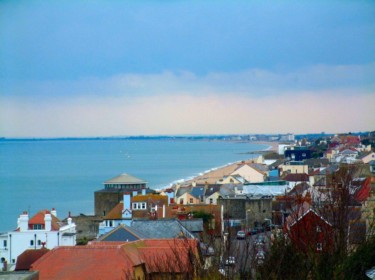
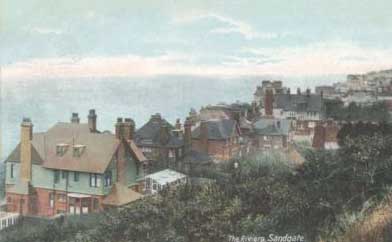
As always, there are lots of pictures to load. If any remain blank after the page has loaded, right click your mouse into the space, and click 'Show Picture', and it should come in for you.
|
1908
|
Modern
|

This picture is also on the Hythe and public transport pages,, because this tram service ran through Sandgate, Seabrook and Hythe - and besides, I love this photograph! :-) If you would like to read more on these trams, please check out this very good website: http://www.tramwayinfo.com/ Just click on the postcard index.
I also came across this article - reduced a little to save space:
Many Acts had been submitted and rejected, even a suggestion that a steam service might be possible. Finally in October 1874 a horse-drawn service commenced.
The route involved many sharp curves and cars were equipped with water tanks on the platforms with taps which could be turned on to lubricate the wheels when such bends were negotiated.
In 1893 the South Eastern Railway was authorised by Parliament to take over the tramway at a cost of nearly £27,000. When the transaction had been completed staff were fitted out with railway guard type uniforms.
When the war came in 1914 trams were suspended due to the shortage of horses which were needed in France.
Trams restarted in 1919 but horses were still difficult to find so ex-army mules were tried instead. The result apparently was catastrophic. The mules were erratic and not only stopped in the wrong places but often tried to walk in the wrong direction or into the wrong street. Horses were reinstated as soon as possible.
After the war the tram service was beginning to lose its appeal. Uniforms were no longer provided and there were no winter services.
When trams stopped for the season on 30th September 1921 - it was to be for the last time.
This article is an edited version from Leslie Oppitz's book 'Lost Railways of Kent'
|

1918
|
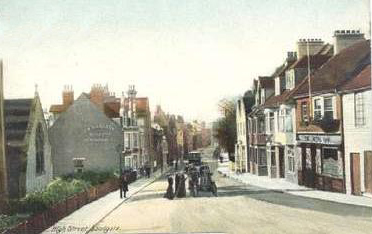
Here is a very old photo of the High Street in Sandgate. I wonder if they had as many antique shops down there in those days as they do today? Coming from Canada, where the roads are wide, I find this street particularly scary to drive through, with cars parked on either side, and two way traffic, and it is no wider than you see here!
|
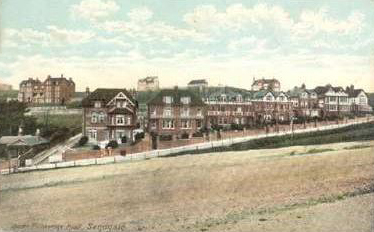
This is listed as the Upper Folkestone Road. Isn't that the same street that we call Sandgate Hill?
|

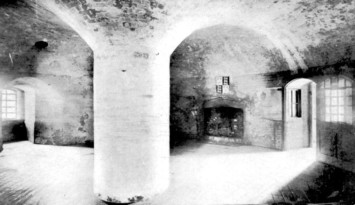
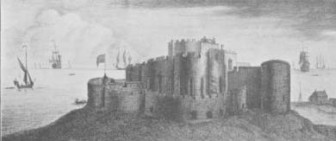

This one says 'The Keep, or General View of Sandgate Castle, built by King Henry VIII, 1539-40'
|
This is a drawing of Sandgate Castle from 1735. I realise that artists have artistic licence, but do you think the castle ever looked like this? If so, it was wonderful wasn't it? This does look more like something that Henry VIII would have built doesn't it?
|
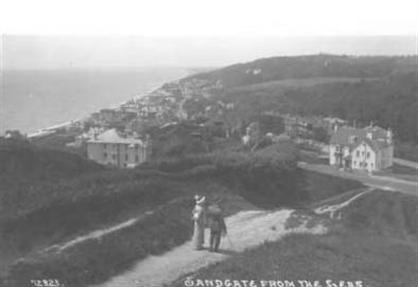
Entitled Sandgate from the Leas, I am not sure of the date of this one.
|
On the other hand, this one was postally used in 1908, and depicts Sandgate tramway.
|
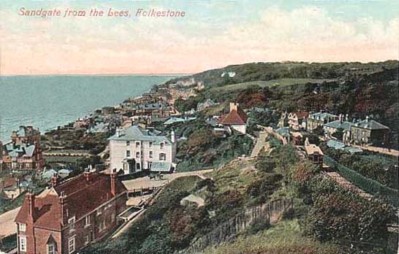
Another view of the tramway, or lift as it was also known.
This one was sent to me by Mike Vernol.
|
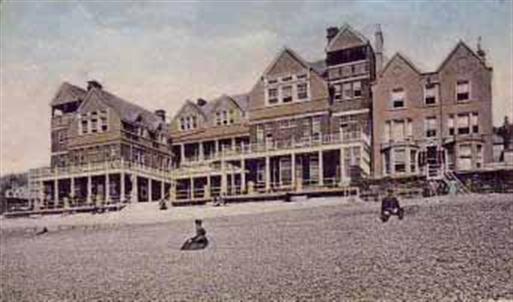
This was the Alfred Bevan Memorial Home - formerly the Beach Rocks Convalescent Home built in 1892 by the London Samaritan Society. If you would like to read more about this building, there is an interesting article on it HERE I don't have a date for the photo on the left, but the one on the right dates from 1915.
|
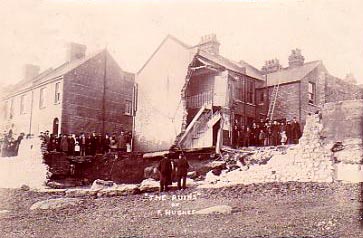

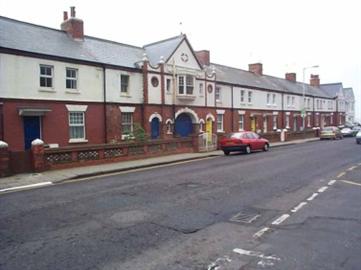
This is a modern photo of the Coastgard's cottages, which were built in 1896. Now being used as private residences.
|

Farley House, Sandgate. Right on the seafront.
|
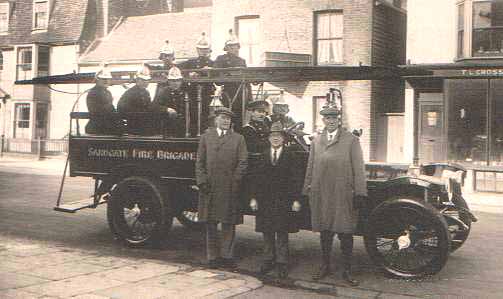
This fine body of men were the Sandgate Fire Brigade
|
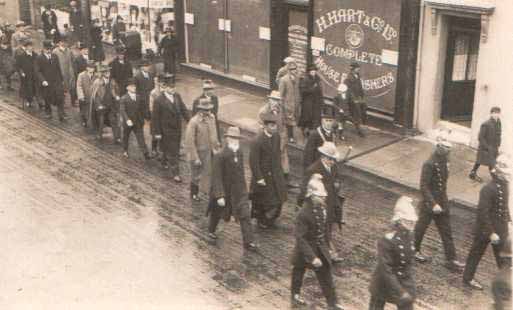
Here is the same Fire Brigade marching through Sandgate. I don't know who all the men marching behind were, but probably the one with the chain around his neck was the Mayor.
Trying to read the sign of H. Hart & Co Ltd. It says 'Complete House...and that person is in the way, would it have been Furnishers?'
|
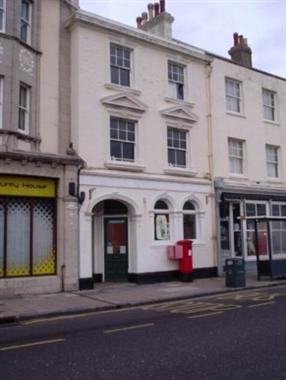
Another modern photo showing the former post office in Sandgate High Street.
|
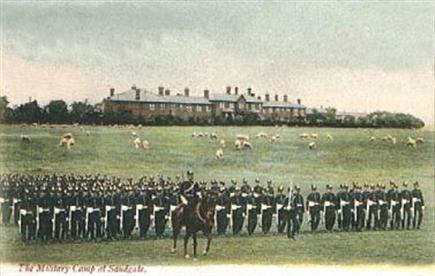
This was a Military Camp, located in Sandgate in 1905. Is that sheep that they had to share a field with? Well, I am sure it saved them having to cut the grass.
|

This card was entitled 'Radnor Cliff, Sandgate'. That Lord Radnor gets everywhere doesn't he?
|
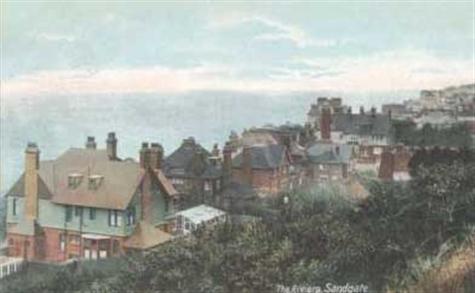
Sandgate Riviera in 1908
|
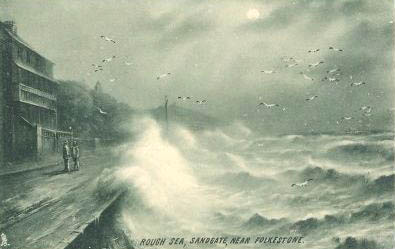
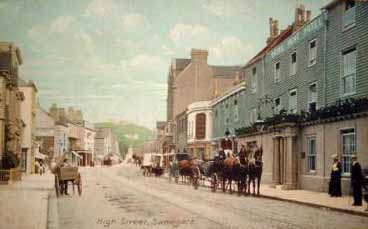
In the photo above, you can make out the Royal Kent Hotel over on the right and the name on one of the carts is A.C. Dimmock. Moving up in time, the photo right dates from 1950, and as you can see, the Royal Kent was still there at that time. The vehicles had changed slightly though!
|
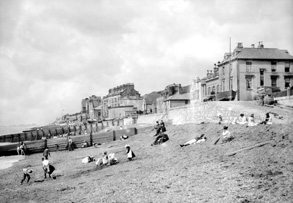
Another beach scene dating back to 1899.
|
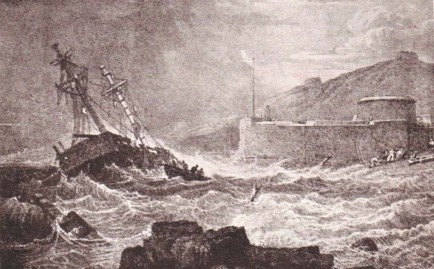
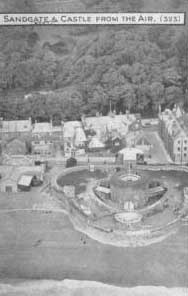

Another view of the castle from the beach
|
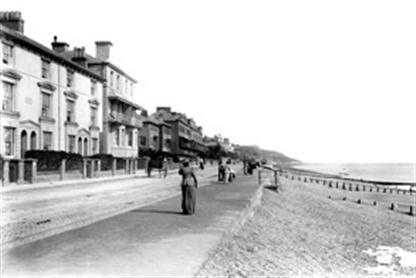
Sandgate Esplanade in 1903
|
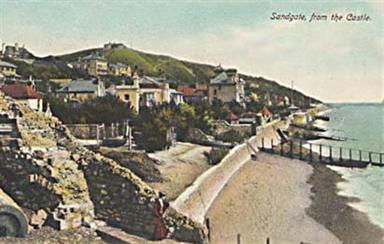
This photo was taken from the castle in 1905 and probably tinted afterwards. They did a good job with it didn't they?
|
Gloster Terrace in 1905. This is one of the photos that made me think that the one of the High Street further up would have been taken in the same year. If you compare the light standards in each, they look identical.
|
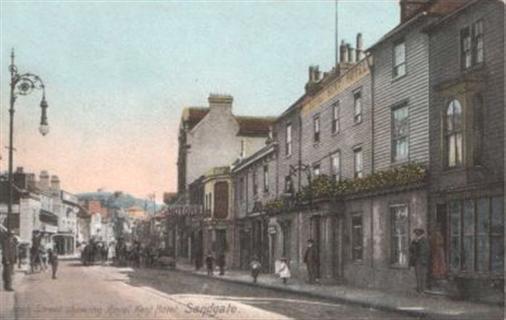
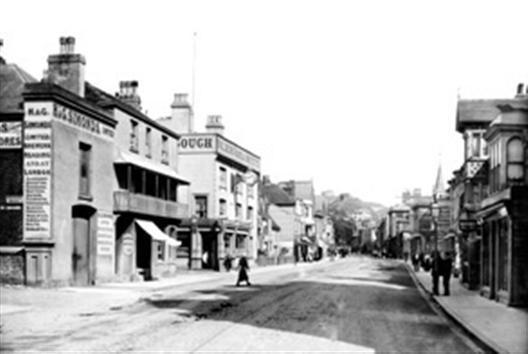
I do have a date for this one though, it goes right back to 1899.
|
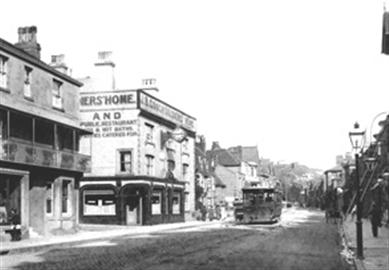
Just 4 years later, and it looks as if the building on the left has changed hands - at least the sign at the top is different.
|

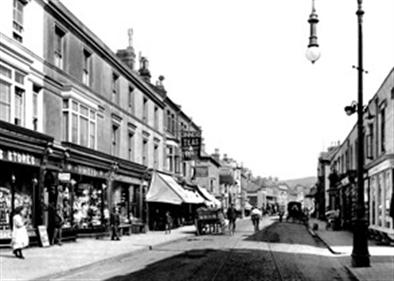
These two were both taken in 1906. I wonder if that was the International Stores on the left?
|
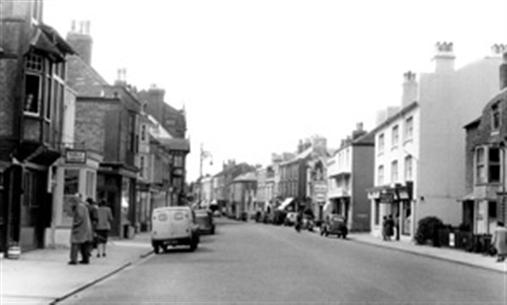
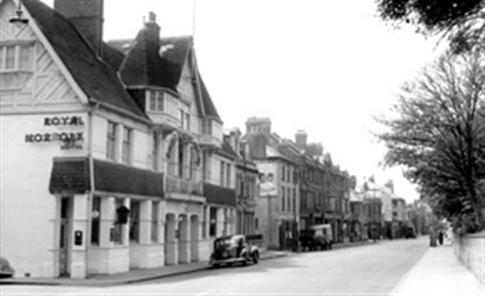
We are taking a huge leap forward now, because these two were both taken in 1960. On the right, is clearly seen the Royal Norfolk Hotel.
|
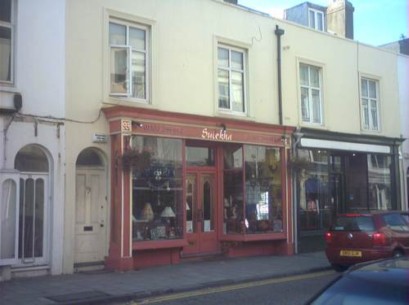
This modern photo showing one of the lovely antique shops in the High Street shows how they are trying to preserve the look of old Sandgate. They have obviously replaced the windows above the shop, when closed, they look like the old fashioned push up variety, but when open, as the one on the left is, you can see it opens outwards like the modern ones. Very cunning! :-)
|
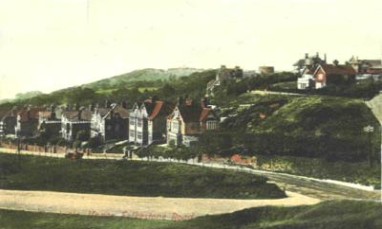

Another photo showing Sandgate with the tram going down the hill - or maybe it was coming up, we will never know! This picture dates from 1904.
|

This one gives you a closer view of the lift car itself. I was comparing it to the photo right to see if it was the same age, and noticed that the large house with the red roof near the bottom of the hill in the picture above, is missing from this one. However, I don't know if they had just pulled it down, or it hadn't been built yet!
|
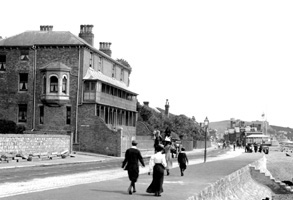
OK, back to the dim and distant past. This time it is 1899, and we are on the Parade, at least this is what this card was entitled. However, that looks very much like Farleigh House, which according to the following website was on the corner of The Esplanade and Prospect Road. If you would like to read an interesting story about Farleigh house and the Duke of Wellington, do check the website of the Folkestone & District Local History Society.
|
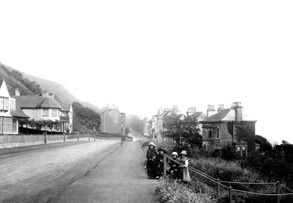
This was Radnor Crescent in 1913.
|

This was at Seapoint in 1913.
|
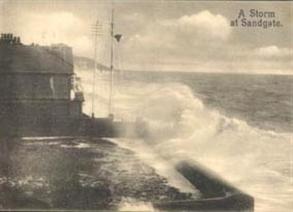
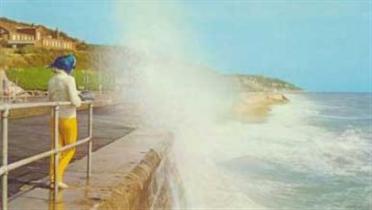
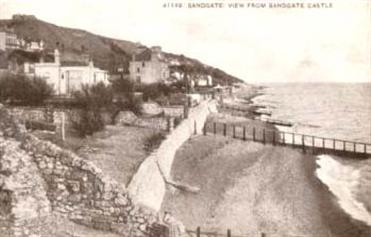
Home
|
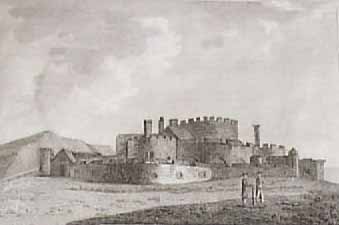
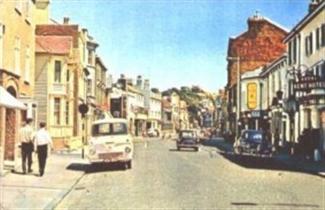
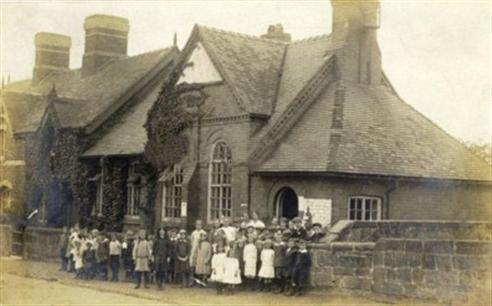
This page updated June 24, 2012
|
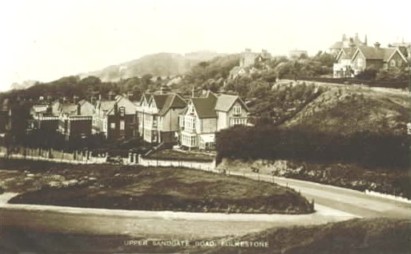
I do believe the road on the right is the same one again. However, this time it was entitled Upper Sandgate Road.
|
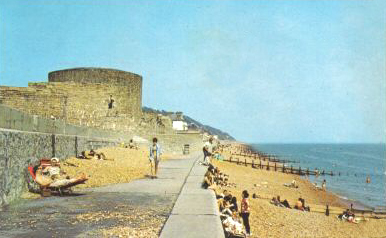
Taken considerably later, this is how the castle and beach looked in 1970
|
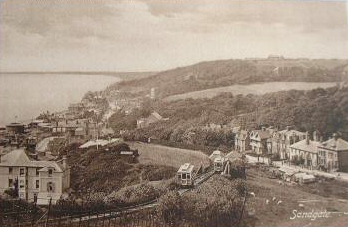


Here is the Coastguard Station and the Sir John Moore's Memorial
|
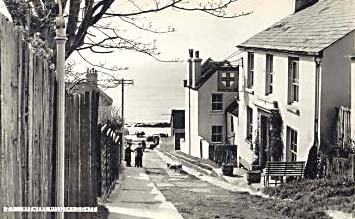
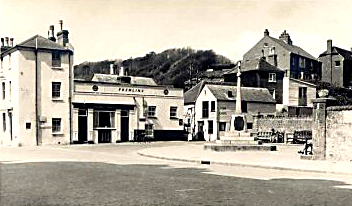
Funny how they always seem to locate a pub at the bottom of a hill. On the left we have Brewers Hill, with the Clarendon Inn, and on the right we can see the Military Tavern at the bottom of Military Road. Also in the right photograph you can see the Sandgate Memorial.
|


Here we have The Parade, with people making sure they don't expose an inch of skin! I bet skin cancer was pretty rare in those days!
|
This 1906 photo of the beach shows what I think is a horse powered tram.
|
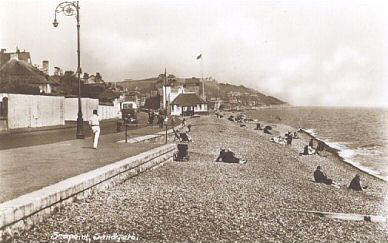
Oh my goodness, that man is wearing white instead of black! That must have been the thoroughly modern man of 1928!
|

Another photo of the Esplanade, but I don't have a year for it. However, the tram lines running down the road tells us that it was taken while the toastrack was running.
|

An amazingly clear photo of Sandgate Hill, especially as it was taken in 1909!
|
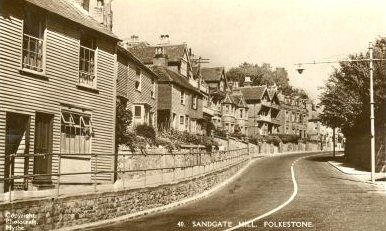
This one looks older doesn't it? Except the white line down the centre of the road tells you that it has to be later. In fact it was taken in 1948.
|

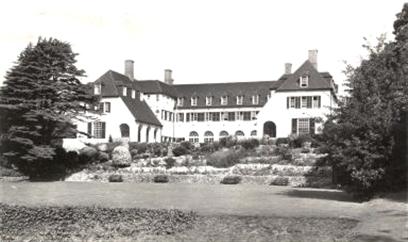
If you have your own memories of Sandgate or Folkestone, please be sure to share them with us by jotting them down in the guestbook below.
|
I just came across this in a 1904 Ward Lock guide book:
A romantic love story in connection with Sandgate Castle is given by Mr. W. L. Rutton in his interesting pamphlet on the Castle.
Two years before Queen Elizabeth's visit in 1573, the Captain of the Castle had been one Thomas Keyes, who also bore the title of Queen's Sergeant's Porter, an office for which his extra-ordinary size would seem to have well fitted him. Though of comparitively humble birth, he had the temerity to fall in love with and secretly wed Lady Mary Grey, the diminutive youngest sister of the unfortunate Lady Jane Grey.
|
It was certainly, as Cecil wrote, "an unhappy chance and monstrous" that the Sergeant-Porter, "the biggest gentleman in the Court," should marry the Lady Mary, "the least of all in the Court." When the Queen heard of the match she was furious, and immediately consigned the burly bridegroom to the Fleet, at the same time placing his little wife in the charge of Sir Thomas Gresham, the famous merchant of London.
Though so ill-consorted in size, the pair would seem to have been devotedly attached to each other. After being in durance vile for two years, Keys was liberated, and eventually appointed Captain of Sandgate; but to all his petitions "that according to the laws of God he might be permitted to live with his wife" Elizabeth turned a deaf ear.
The Sergeant-Porter died in 1571 probably in Sandgate, and Lady Mary bravely defied the Queen by signing herself henceforth "Mary Keyes," and living as a widow. She died in London in 1578 at the age of thirty-three.
|
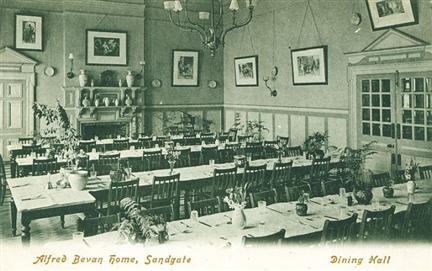
.jpg)
Photo is courtesy Ian Detmold
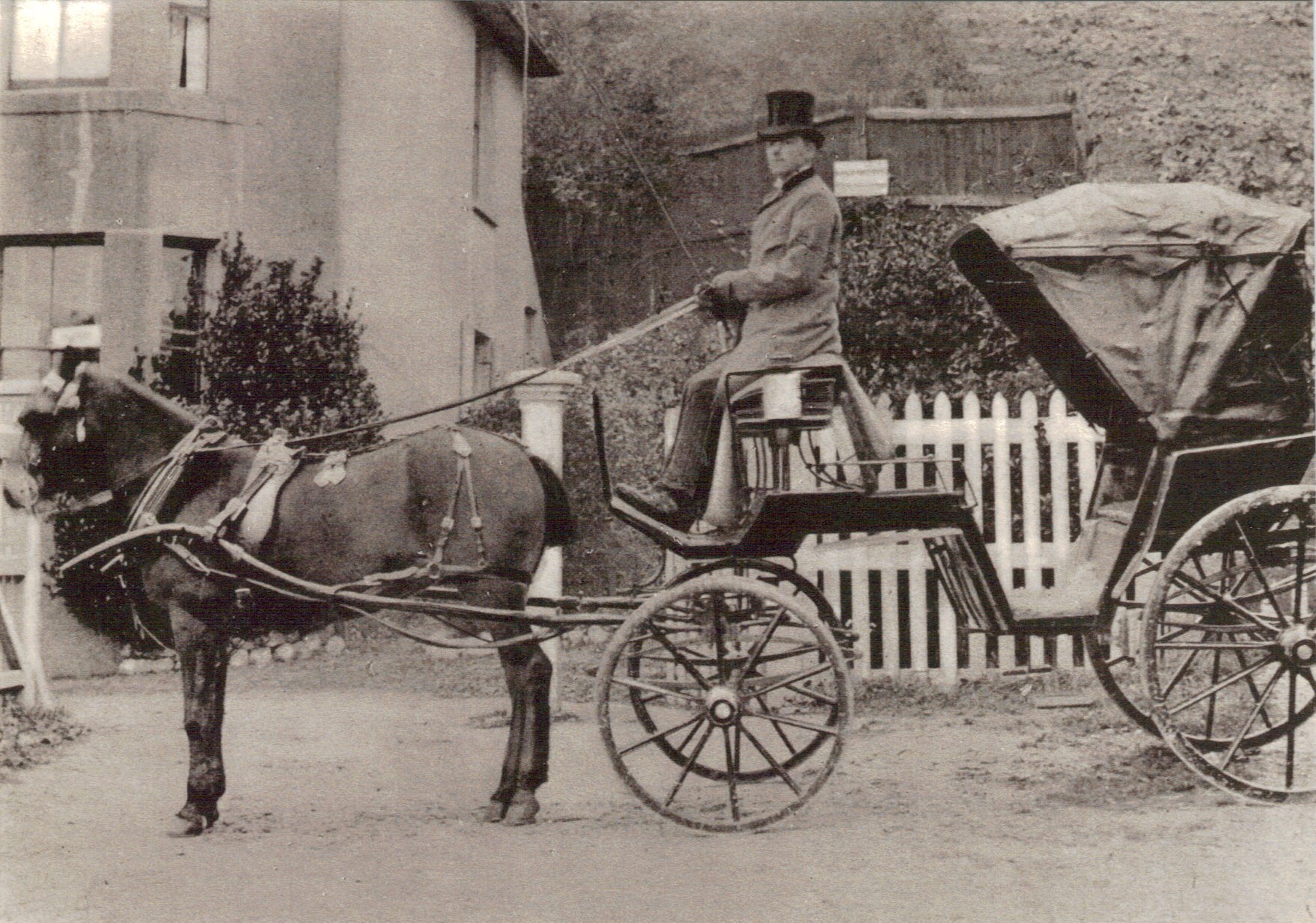
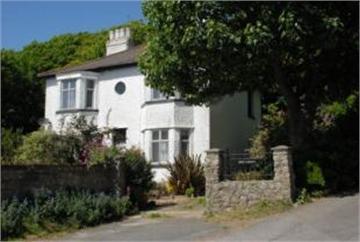
The building above is a modern photo of Westgrove House, which is now flats. Above that, we have a photo of Charles Fox on his fly, outside Westgrove House in 1900

Not exactly of the Windsor standard, but Sandgate has its own Tudor castle, pictured here in 1917
and here on the right is the central chamber of the same castle, also pictured in 1917. I think they need to call Maple & Co of London & Paris (referred to on the Hotels page) don't you? The furnishings are a little sparse!
Mind you, they do have some kind of shield over the fireplace, if nothing else.
TheThis view shows the castle with more walls than it has now. I would guess it to date from the 1930's
When you look at the castle from the air, it certainly looks bigger doesn't it? Mind you, this was taken some time ago, and it was bigger before the sea eroded the outer walls.
This interesting picture from 1823 was sent to me by David. I am assuming that there is a rescue operation goin on from that distressed ship. Also in the picture is Sandgate Castle.
And here is that castle from an engraving in 1787, leading me to believe that the drawing above was pretty accurate.
Such a shame it has lost its former glory isn't it?
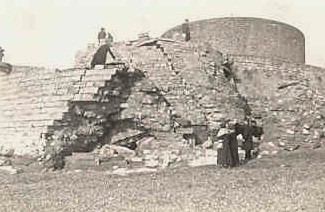
Damage to the castle in 1923 from the tide.
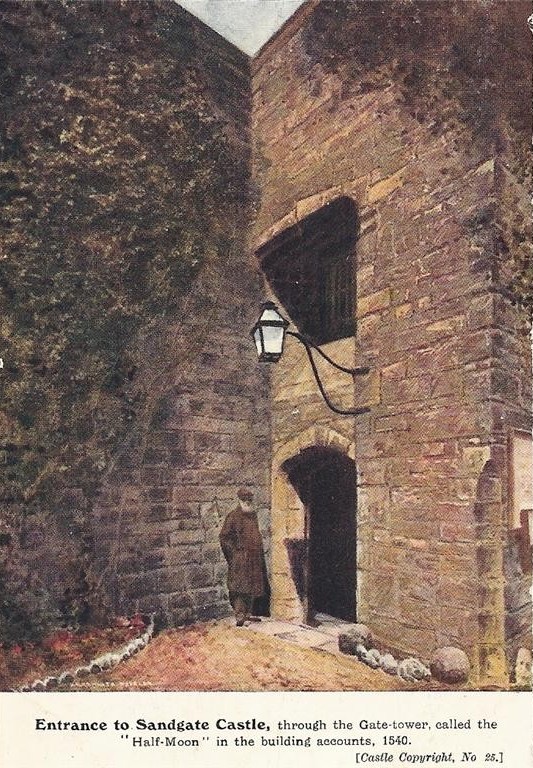
Sandgate Castle Entrance through the Gate-tower called The Half Moon
Taken from the Building Accounts of 1540
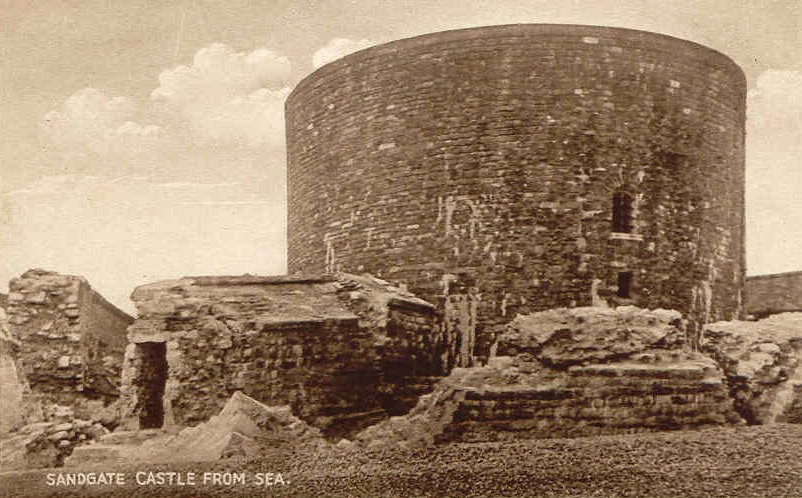
If this picture is accurate, and not just made up for the photograph, it looks as if the castle was furnished at one time.
These two photos show Sandgate Castle the way it is today, which confuses me a little. I thought there was only one tower left, yet it looks like two. Possibly the one with the canons on top is just a wall, but I really don't know, I can't get round the back with Google. This is what Wikipedia says about the castle:
During the castle’s long history Henry VIII visited in 1542, Elizabeth I in 1572 and 1588 and Queen Victoria and Prince Albert in the late 1800s. In 1715-1716 the keep was re-roofed and the seaward battery rebuilt following damage by the spring tides. In 1805-1806, during the Napoleonic wars, a major series of alterations were carried out on the castle to convert it into a gun fort/castle. The tops of the original defensive towers were removed and the central tower converted into a Martello-style tower mounting a coastal battery.
In the late 1850s a new magazine was built and alterations made to the existing gun emplacements. Pillboxes were constructed at the castle during the 2nd World War. Bizarrely by today’s heritage standards, the castle was sold by the government due to defence cutbacks in 1889. From the late 1890s the castle has gone through a number of non military reincarnations and uses. It became a private house in the late 1890s, but was again requisitioned for defence in both the 1st and 2nd World Wars. The South Eastern Railway Company applied to have the castle demolished in 1911 to provide a rail link along the coastline from Hythe to Folkestone In 1960 another application for demolition and replacement with a block of flats was rejected by the planning authority.
The great storm of 1950 took around a third of the front portion of the castle and most of the outer wall on the south side was destroyed by coastal erosion. New sea defences were built shortly thereafter to protect it for the future. Consequently the castle title deeds still contain ownership below the low water mark where the castle originally stood.
For a period it became a museum, then a banqueting facility/restaurant and was finally converted into a permanent private dwelling in the late 1990s under the strict supervision of the Department of Environment and English Heritage. By then, the castle’s appearance had changed radically, with most of it re-faced during Napoleonic times, although there is evidence in the curtain walling of the original Tudor stonework, including French stone from Caen brought from the local monasteries of St Radegund near Dover and Christchurch, Canterbury, demolished during the dissolution.[3]
The castle is now in good heart as a private dwelling and the main keep is topped with a distinctive stainless steel cap.
The Coastguard's station in 1923. It looks as if it is taking quite a beating doesn't it?

The coatsguard cottages from the back. In the foreground you can see a nice little canon, hopefully for decorative purposes, I am not sure what the range of a canon that size is, but it doesn't look very menacing does it?
This was taken in December of 1905 by the owner of this house which had been wrecked by the sea.
Now this one is hardly Riviera like is it? Pretty typical sight though, even these days.
.jpg)

This is where everyone ended up at the bottom of the hill.
This card was found in my Aunt's belongings after she died, thank you to my cousin Philip for passing it along to me.
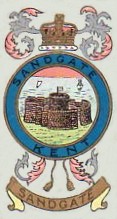

I don't have a date for this lovely photo of Sandgate High Street, but it must date from around 1905 because the street light looks identical to some shown in other photos of that year.
The little girl on the right is talking to an adult in the doorway of the Royal Kent Hotel.
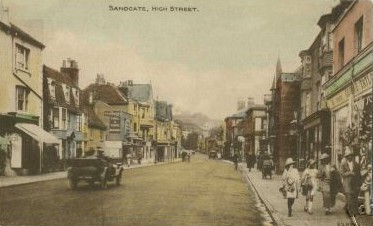
However, although there is a motor car in this one, and it is tinted, I see no street lamps, yet both the other two have them.
Sandgate High Street now, certainly not as bustling as it was in the old days.
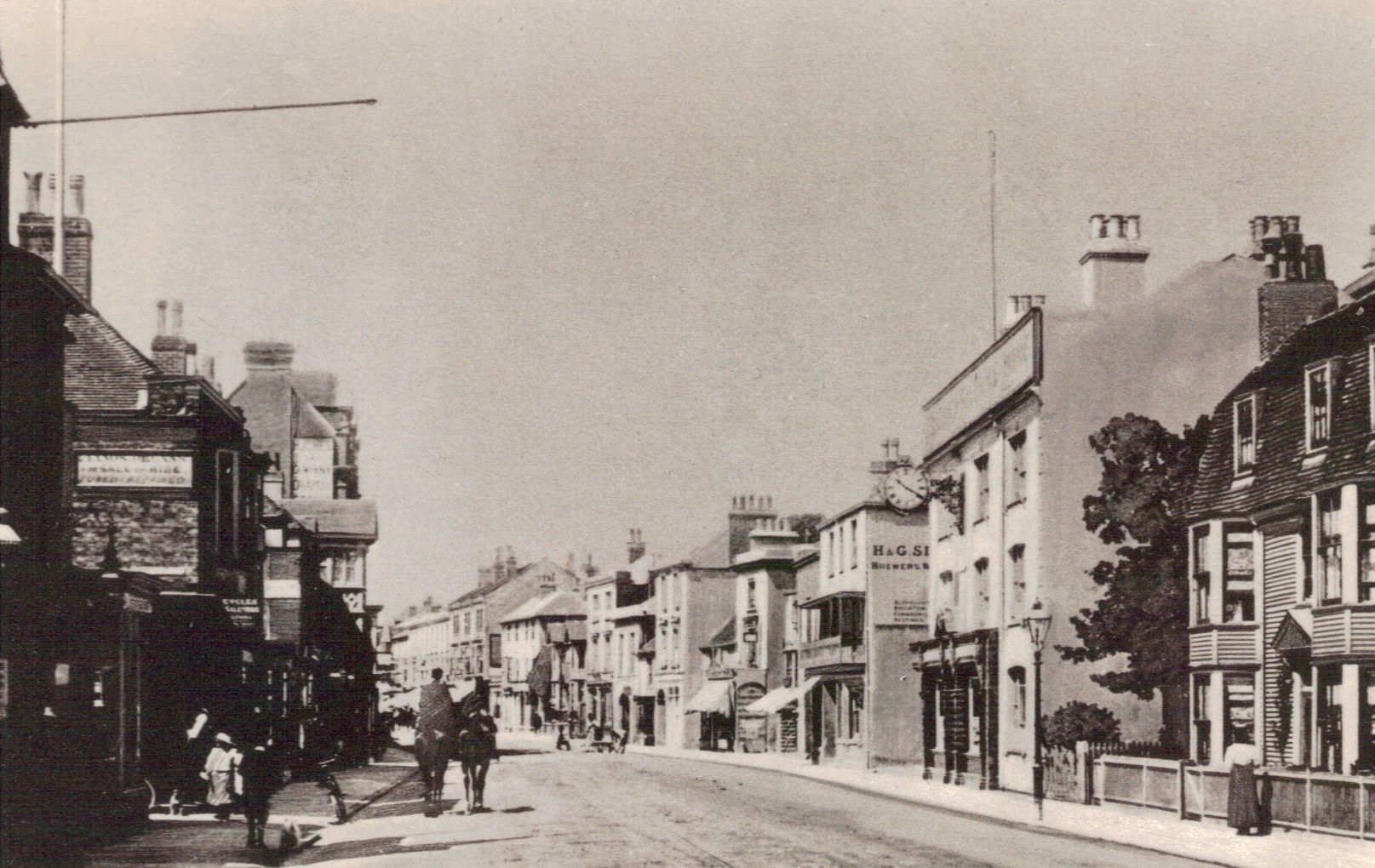
Another nice 1900's photo of the High Street, taken at 10:20 a.m. if the clock is to be believed. On the wall on the next building along from the clock you can make out H & G S something, Brewers, and on the left is a cycle shop offering them for sale or hire, plus repairs. The two people in the road don't need cycles however, as they have horses to get them around.
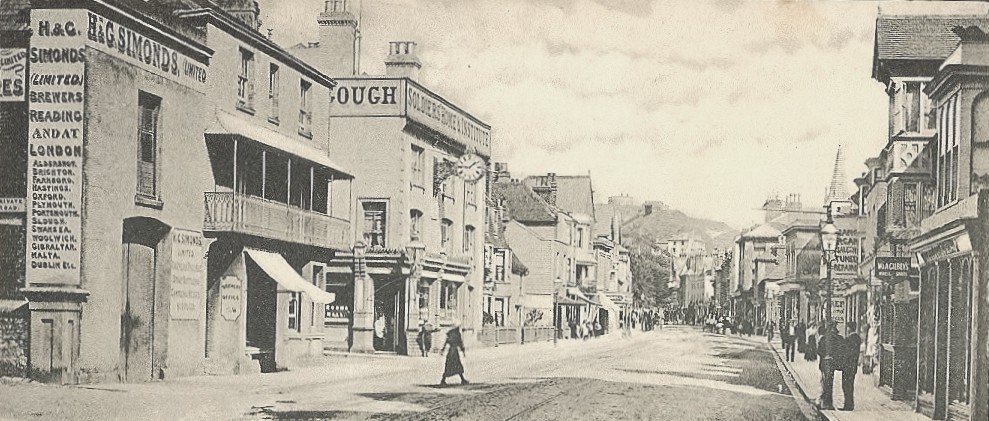
Aha! Same shops taken from the opposite direction and posted in 1902. So we see that the Brewers was H & G Simonds, and this one was taken at almost 9:10 a.m. I wonder if it was on the same day by the same photographer? This one was written on the back by a young boy to his sister, who tells her that this is the street where they had some awful lemonade the day before.

1905
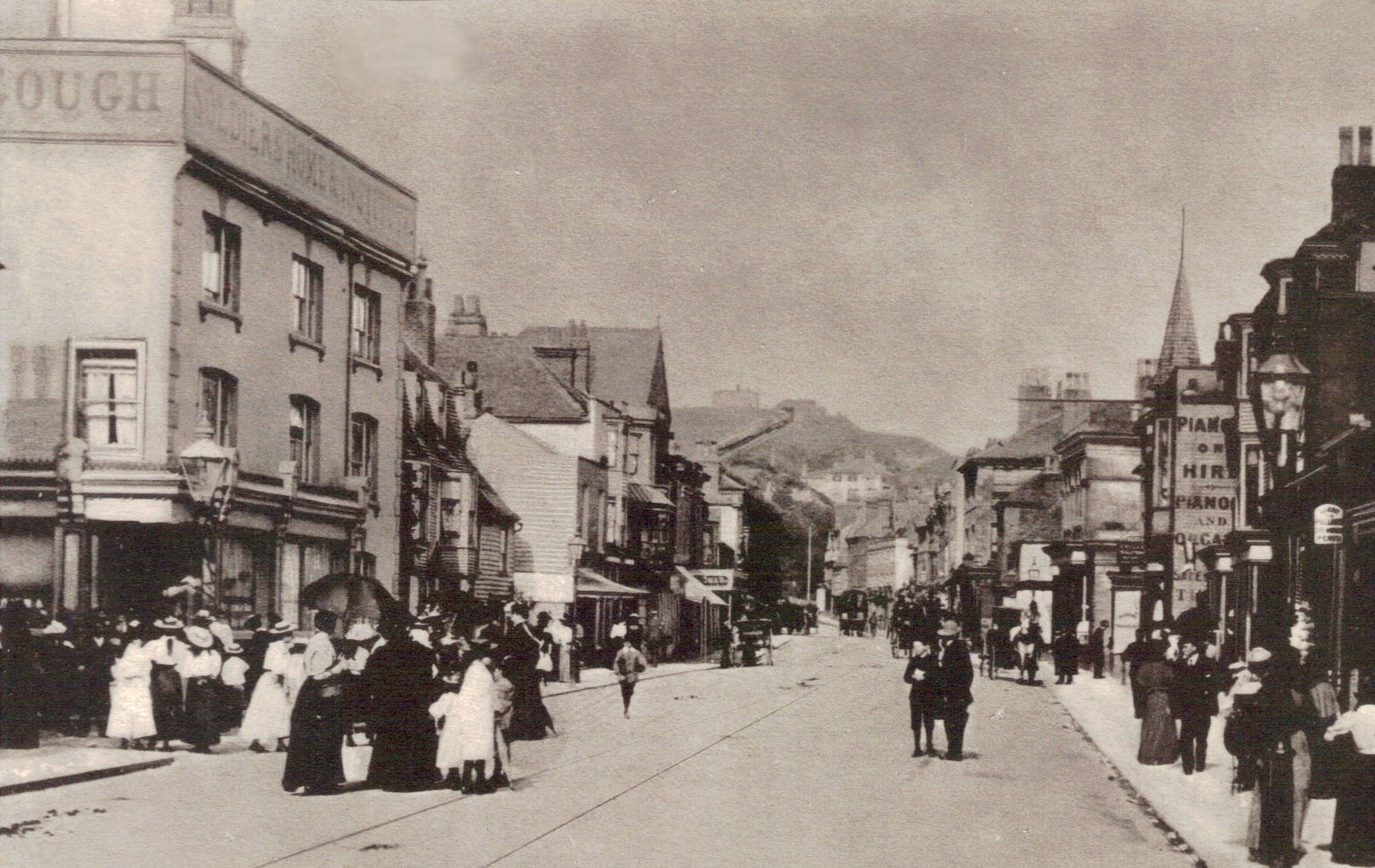
This one dates from before 1897, and I can make out 'Soldiers Home' on the building to the left. Which really makes me wonder why so many women are gathered around the doorway. In a shop on the right, you could hire a piano if you so wished.
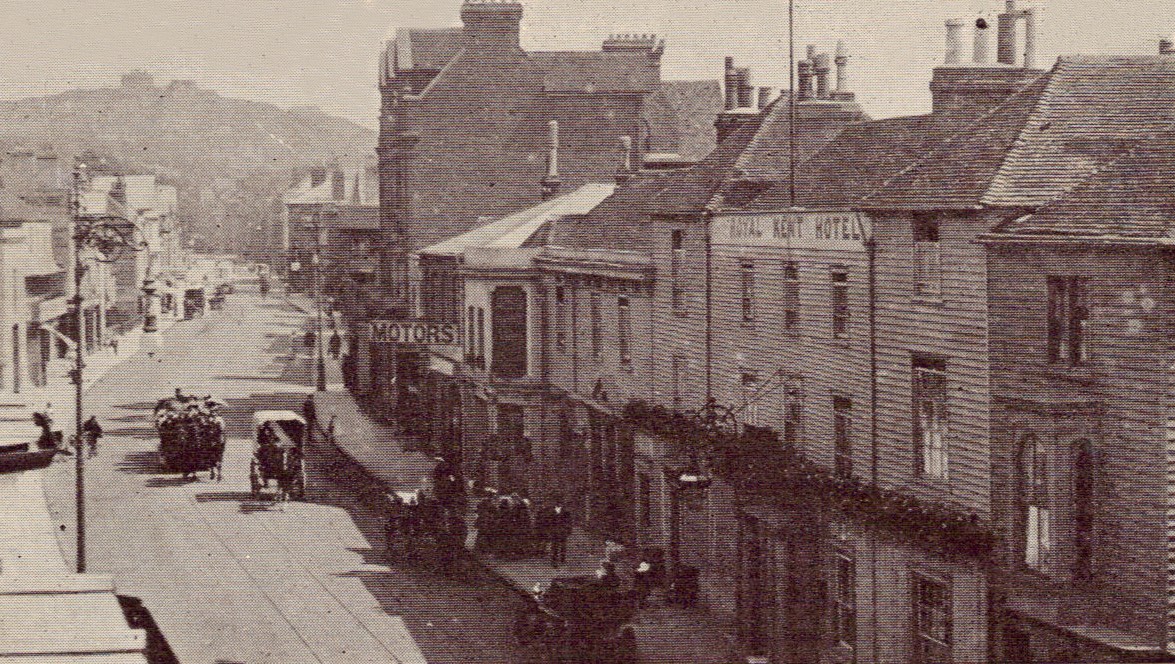
I don't have a date for this one, but as you can see, the motor car was just beginning to make an appearance. Just down from the Royal Kent Hotel, you could buy one too!
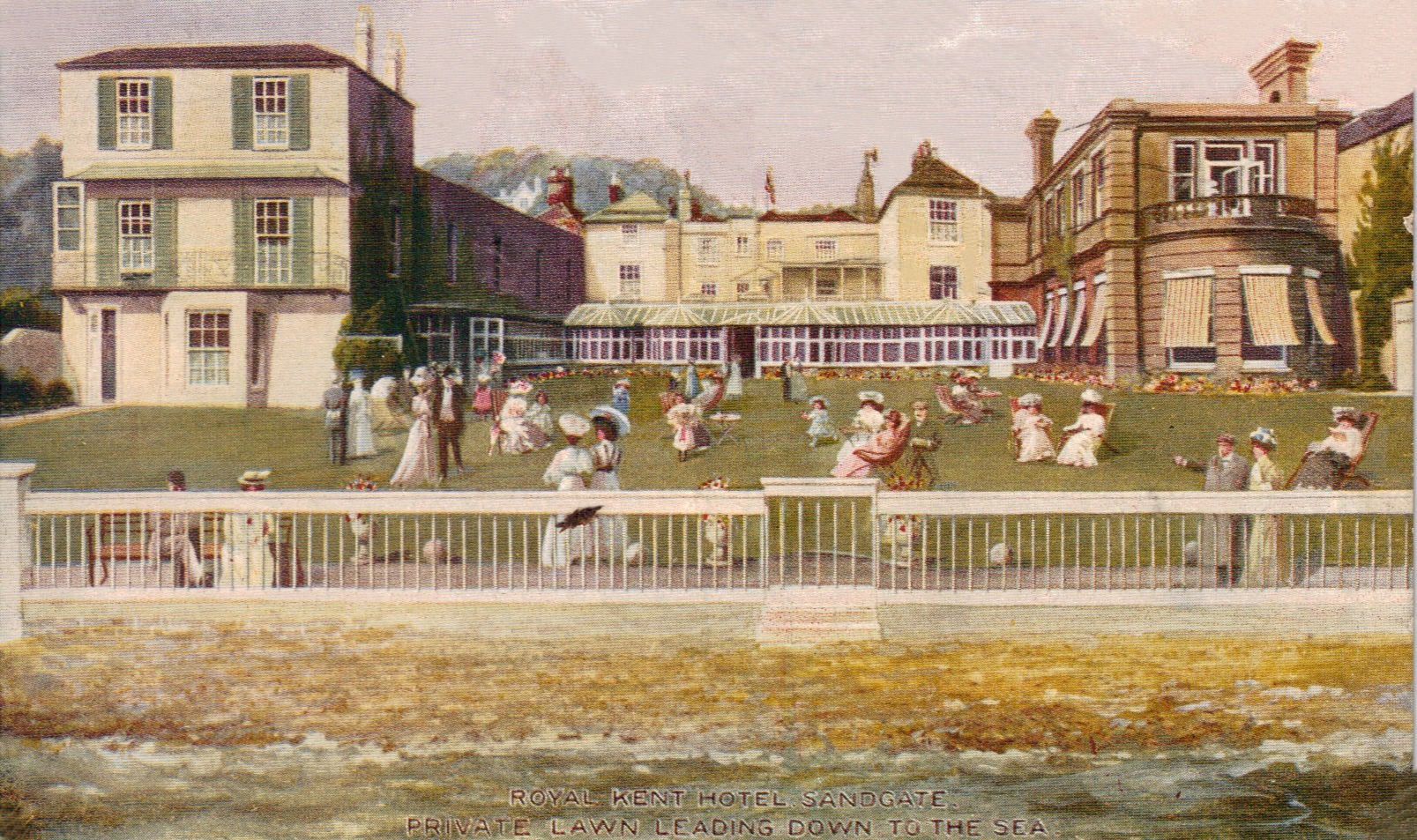
This is what the Royal Kent Hotel had at the back. A private lawn which led down to the sea.
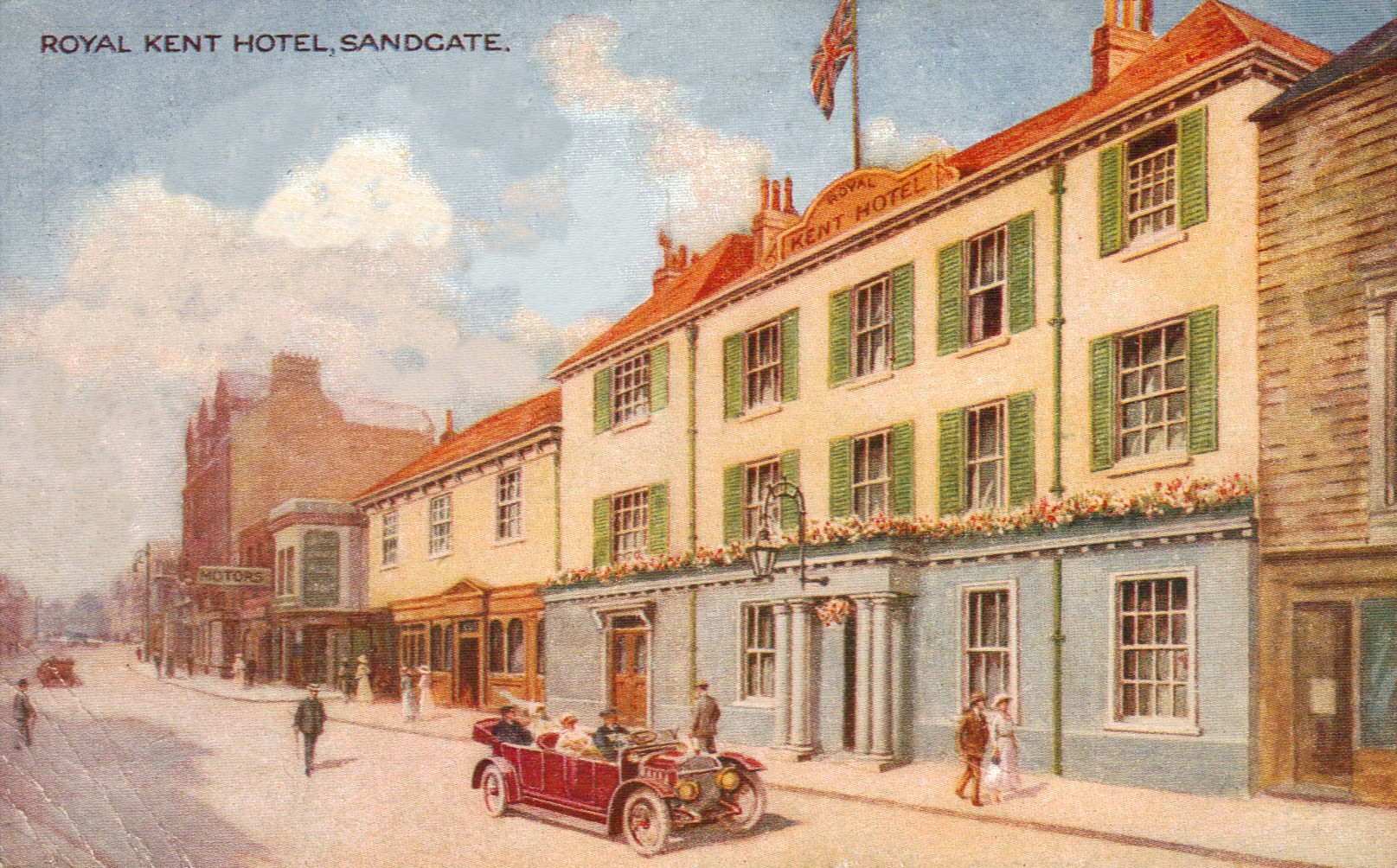
Another art card of the Royal Kent Hotel. I suspect they paid to have these published, because they obviously made the hotel look a lot more grand than it did in the photographs.

That being said, it did look pretty grand in this old photograph, too bad it's blurred.
If I am not mistaken, the building has now been demolished.

Another modern one courtesy Andy Cadier of F. T. Moore, Footwear repair specialist. You can find them at 72 Sandgate High Street. There! A little free advertising! :-)
Here is the Royal Norfolk Hotel taken a lot more recently
And another modern photo of a familiar building, The Ship Inn.
This one is listed as Sandgate Hill, which I believe is the same thing as the Upper Folkestone Road, and also Upper Sandgate Road, as seen in the photos at the top of the page. Note the Martello Tower in the distance? I think that might be No. 6, but I stand to be corrected. I don't know if it is currently being used for anything.

Radnor Cliff in 1910
Radnor Cliff Now
A modern photo of Radnor Cliff Crescent, I am not absolutely certain if it is the same street as above, but looks similar doesn't it?

A nice tinted one of Radnor Cliff from 1917. I am not sure if those girls were sitting in the grass, or possibly on the steps leading up to Radnor Cliff Crescent seen in the photo above left.
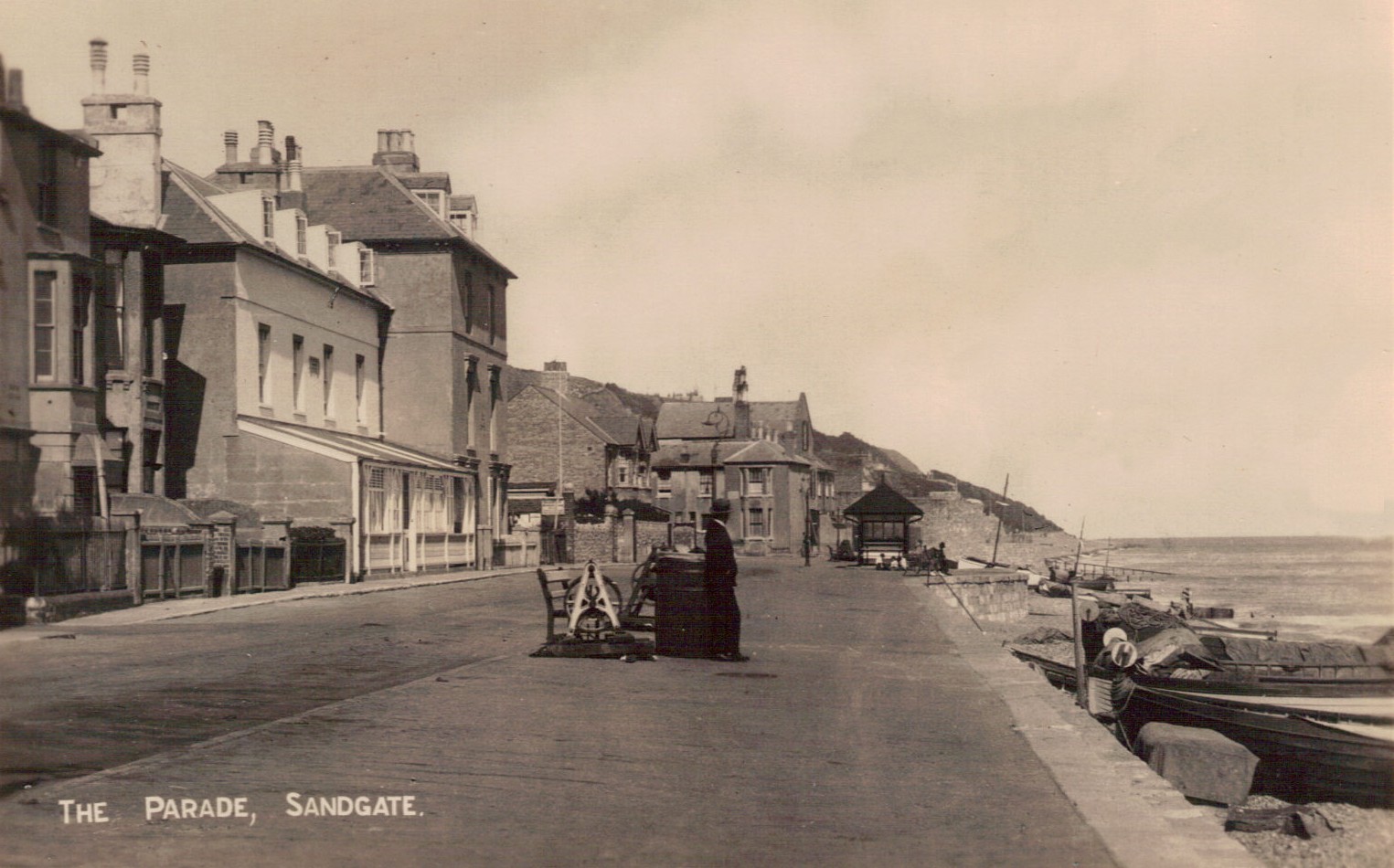
Another nice one of The Parade, taken around the same spot as the one above.
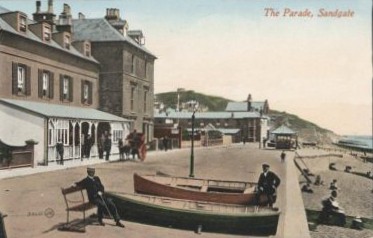
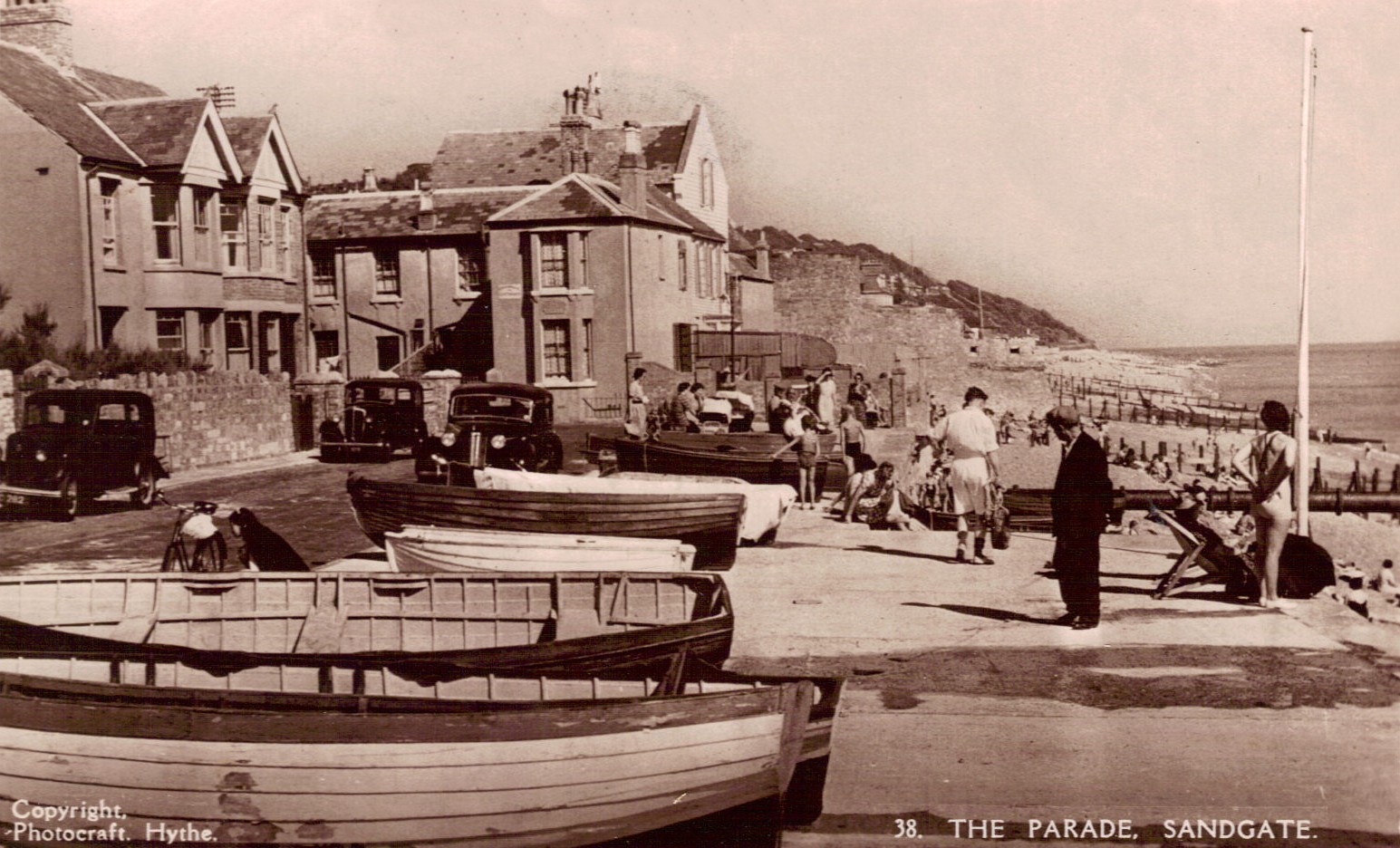
Ah now, this 1948 photo of The Parade looks as if it might lead to Sandgate Castle, and I do believe those buildings are in those shown to the left. So we have pinpointed The Parade as running East of Granville Parade up to Sandgate Castle. (Unless of course someone tells me I am wrong). I see the shelter had been removed by 1948 too.
This is the area that I think might have been known as The Parade, maybe it still is, I'm not sure. No cars allowed down there now.
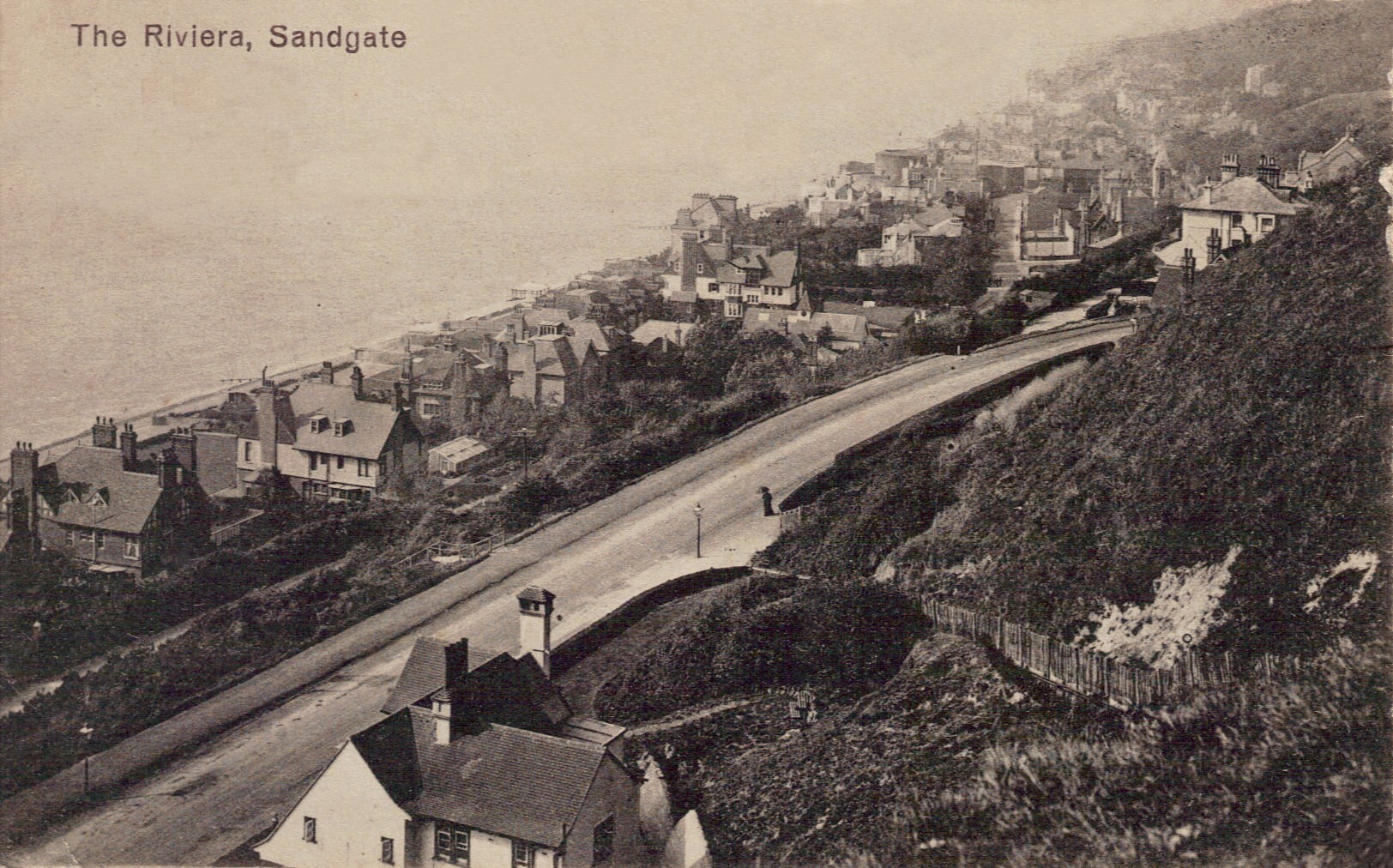

Two more photos of The Riviera, the birds eye view on the left dates from 1914, and taken from the Castle in 1926.
Another old view taken from Sandgate Castle. I wonder if the castle was that close to the sea when they first built it? Not very smart if it was.
Some things never change do they? The sea behaved the same in 1904 in this picture as it did in 1976 on the far right - and is still the same today.
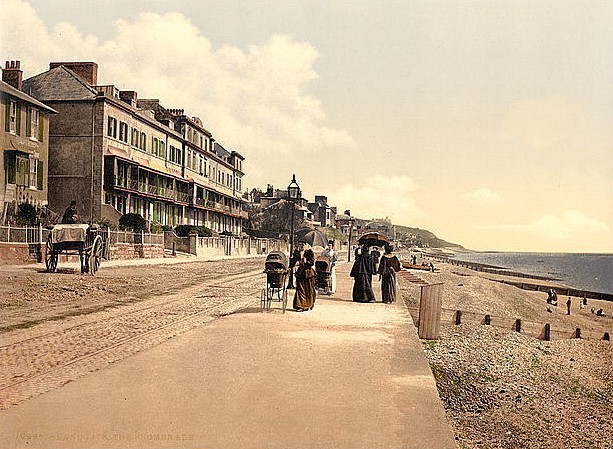
On the right is The Promenade in the 1890's
The Esplanade now


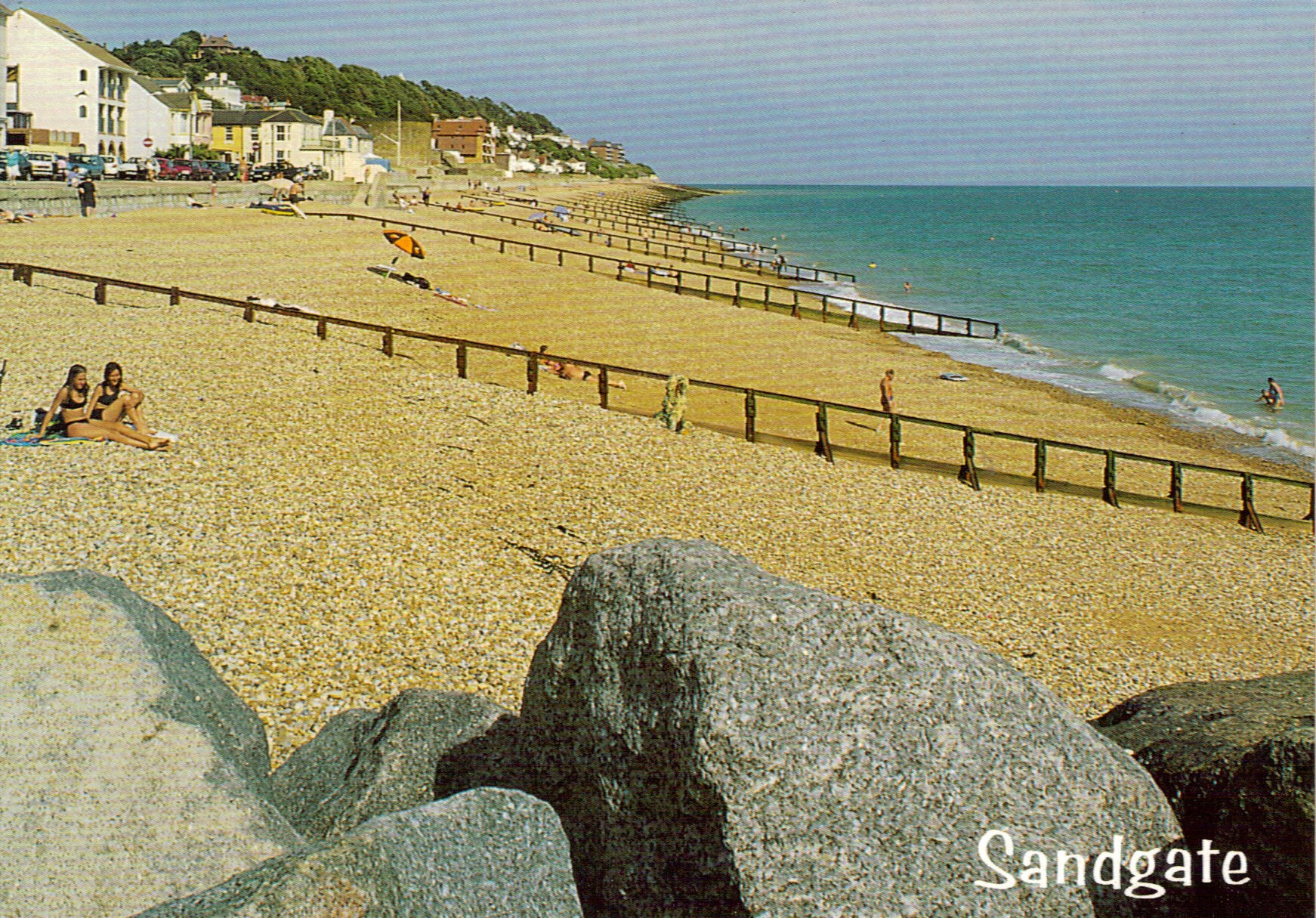
1950
Modern Sandgate
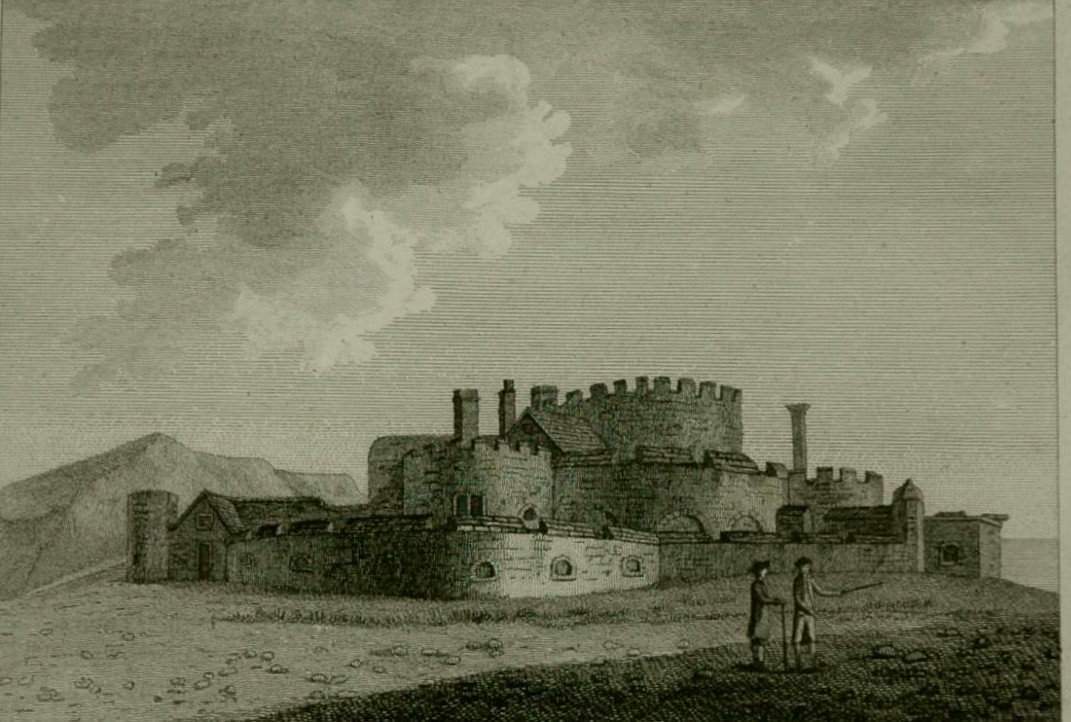
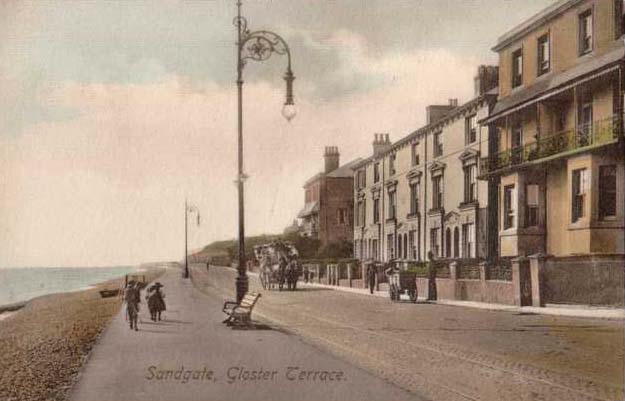
Gloster Terrace now, which is just before you get to Sunnyside Road when heading down the Esplanade towards Folkestone. There used to be a house called Cananore on the corner in the late 50's, but I think it must have been demolished, as there is a modern looking bungalow on that site now.

Here is Gloster Terrace with an incorrect spelling on the card. I don't have a year, but would guess late 40's or early 50's regardless of what looks like a horse & cart. It could have been a rag & bone man or something, I remember them coming around with a horse & cart even in the 50's.
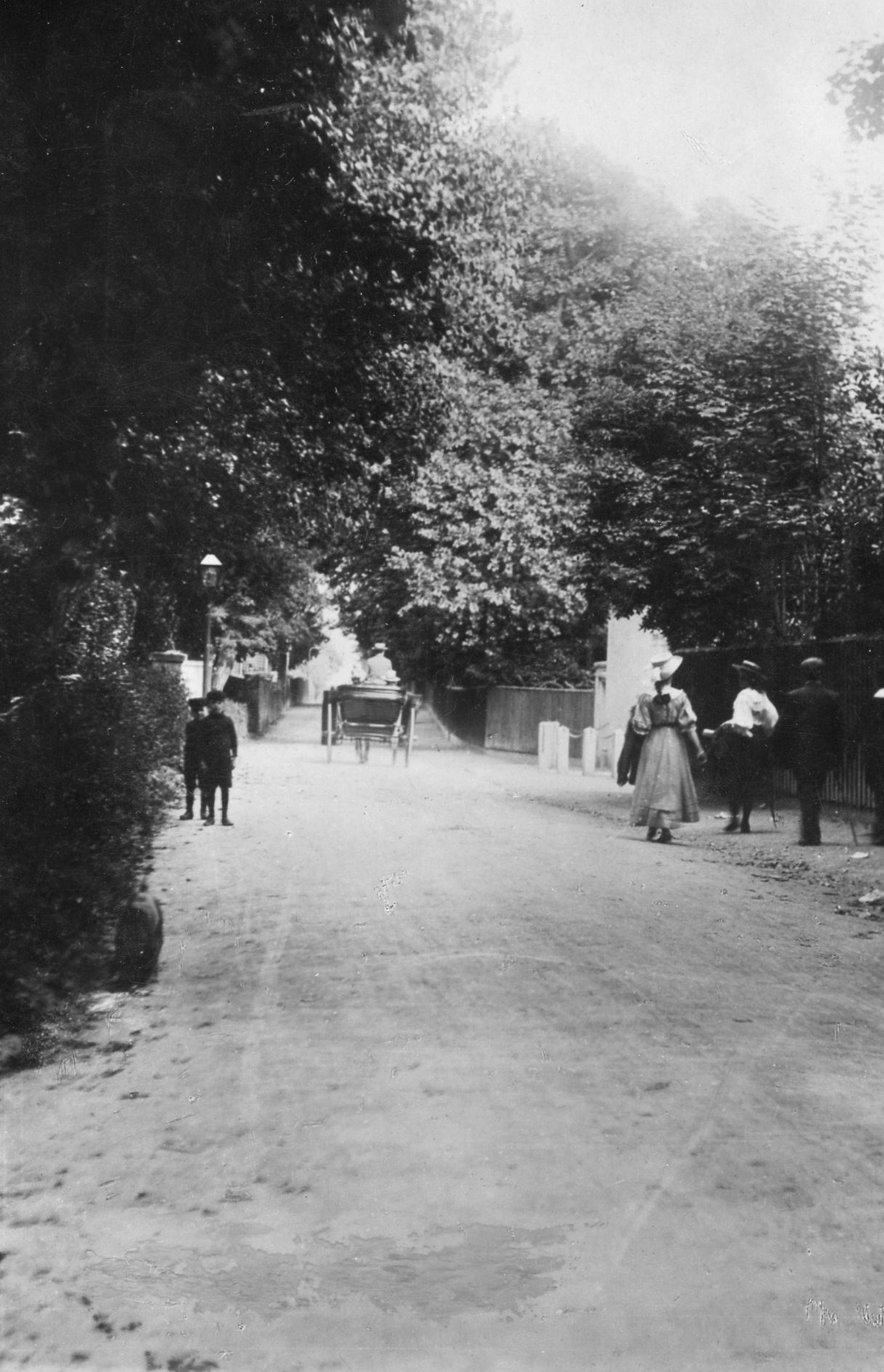
A charming photo on the left of Radnor Cliff in 1913. It was impossible to tell exactly where it had been taken from, but it all looks so different down there now, that it probably makes no difference.
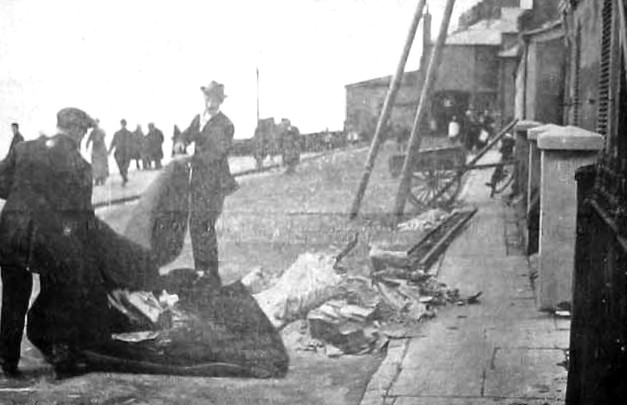
On Sunday, 28 November 1920 there was a mine explosion on the beach in Sandgate. Two coastguardsmen were killed, James McDermott from the HM Coast Guard Station Sandgate and William E. Walker, Leading Boatman from the HM Coast Guard Station Deal. Both men were buried in the same cemetery. The mine caused £10,000 damage.
Two photos of the No. 6 Police Training Centre, the left one was dated at 1962. As you probably know, it was pulled down to make way for the Saga building on the right
Anybody recognise their Grandma? This photo of Sandgate School which I would guess dates from around 1915 or so was well attended over the years. However, if this photo on the right shows that same building, and I am not convinced that it does, it has now been converted into flats. Can anyone tell me if this is the same school? I can't see very much in the modern photo to identify it.
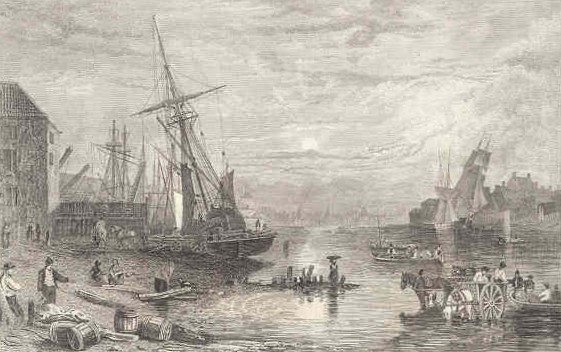
When I bought this small print of an engraving, I was told it was Sandgate, Kent in 1842. However, I am not convinced that it is. Were boats of that size ever pulled up to the shore? I know there is another Sandgate in Queensland, Australia and another I believe in Scotland, so possibly it is one of those. However, it makes for a nice picture, so will leave it here until someone can tell me for sure that it doesn't belong.
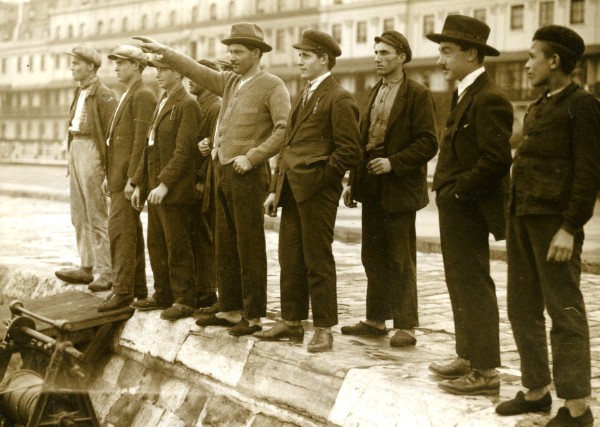
The crew of the 'Cassant' of Nantes, rescued by the 'Kurdistan' after the two vessels had been in collision in the channel. The men are seen pointing out their vessel on shore at Sandgate. This was another that I wasn't convinced was taken in Sangate, especially as I couldn't find anything online about this collision. I didn't recognise the building behind, and noticed that the road behind the men was cobbled. However, looking at Wellington Terrace, I think it just might have been taken opposite there, and just because the road isn't cobbled now, it doesn't mean it wasn't then. So until I hear otherwise, I will leave it here.
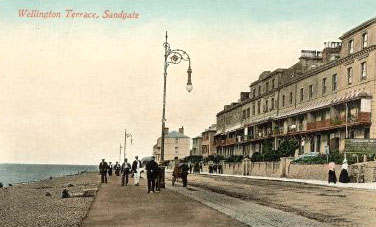

1925
The road in this one looks as if it might have been cobbled.


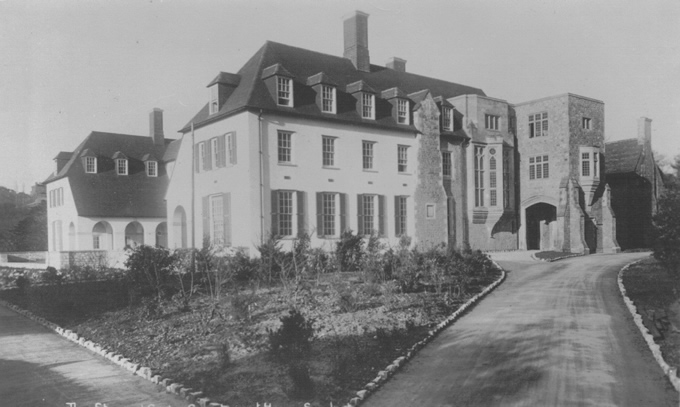
The Star and Garter Convalescent Home for wounded servicemen was originally Enbrook House, built in 1853 - 54, and when the Police took it over as a training college, (pictures further up) it was a Grade 11 listed building. However, that didn't prevent them from demolishing it to make way for the Saga building.
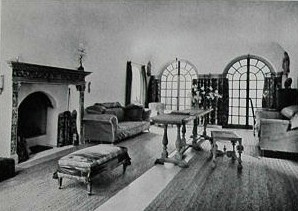
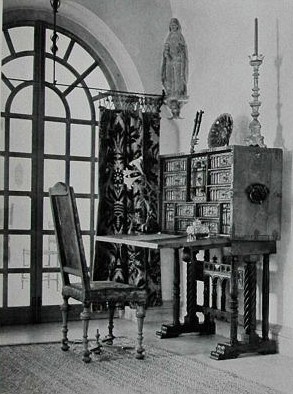

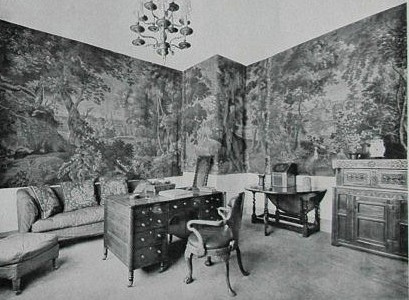

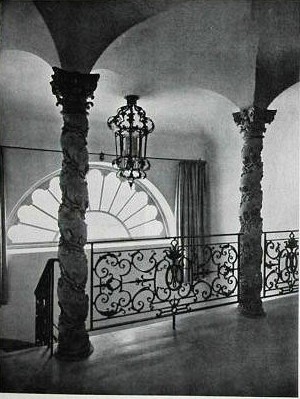
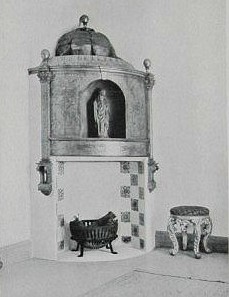
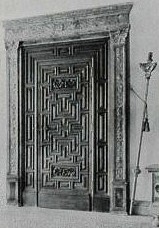

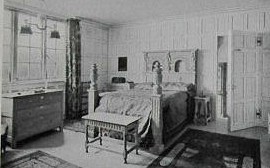
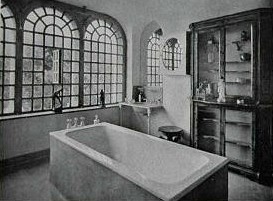

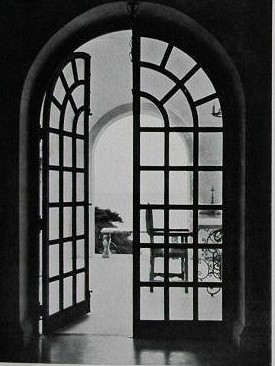
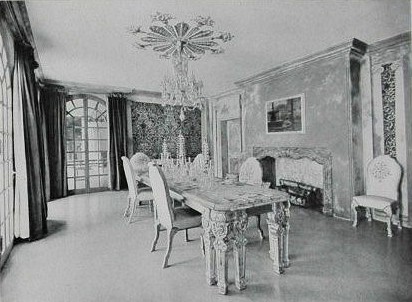
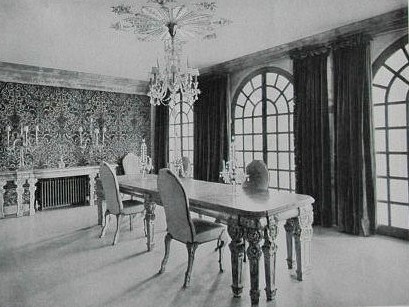
All these photographs were copied from a 1924 issue of Country Life magazine. In it was an article on Encombe House, which was owned at the time by Ralph H. Philipson and his Hungarian born wife, who was responsible for the renovations you see in these photographs. Encombe House was originally built by Henry Dawkins in 1821. Sadly it was destroyed in 1978 by what is described as a mysterious fire. However, looking at the area with Bing's bird's eye view, it is pretty obvious where it used to stand.
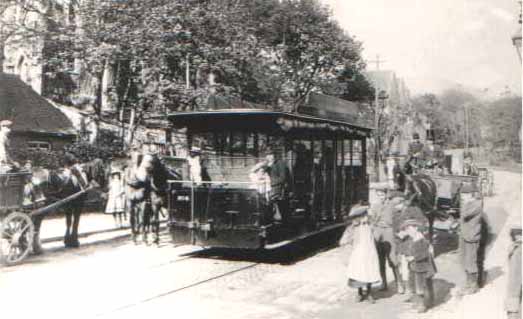

A couple more photos of the tram service between Folkestone and Hythe. I am not sure what was going on in the photo on the left, possibly changing horses?


I copied the following from a website on Jocelyn Brooke. I think they might have meant Miss Pennycuick, not Pinecoffin. Also, although it is advertised as a girls school, the photo of the pupils shows that they had a few boys in the early classes, obviously including Jocelyn Brooke.
Jocelyn Brooke's first school
His first school which he attended for mornings only was Gaudeamus (its real name Conamur). The building at the end of the Riviera later became the Marine Hotel. Under Miss Pinecoffin, its founder, the school inculcated a breezy and strenuous optimism. She was a progressive headmistress, Corot and Greuze hung on the walls, while the singular flora of Art Nouveau, sprawling water lilies and fleur-de-lis, burgeoned unexpectedly in corners. Little girls in sage green djibbahs were perpetually tearing breathlessly to and fro as though the school were run on the lines of a military detention barracks.

If Farleigh House was indeed on the corner of Prospect Road and The Esplanade, it must have been demolished and the building you see below erected in its place.
Taken from an e-mail I received from Jan H a while ago:
I have recently moved to Sandgate and love it already. I feel totally drawn to the area which offers beaches of sand and pebbles, countryside stunningly beautiful, interesting architecture and lovely people too and with a great heritage of talented people (Jocelyn Brooke, Hattie Jacques, HG Wells and many more). I agree that there is still much work to do on some parts of Folkestone to regenerate it - but the signs are there that it is beginning to happen. The Leas Coastal Park play area is great for children - and there are many other, slightly less well known, great places to explore. For example who knows about the Cliff Top Cafe or Little Switzerland - where you can buy refreshments and also sit and look at the most awesome panoramic view. If you pass quickly through Folkestone - you may not see too much to impress you - yet - but if you stay awhile I can tell you - there is plenty to see and do.
Regards
Jan H of Sandgate
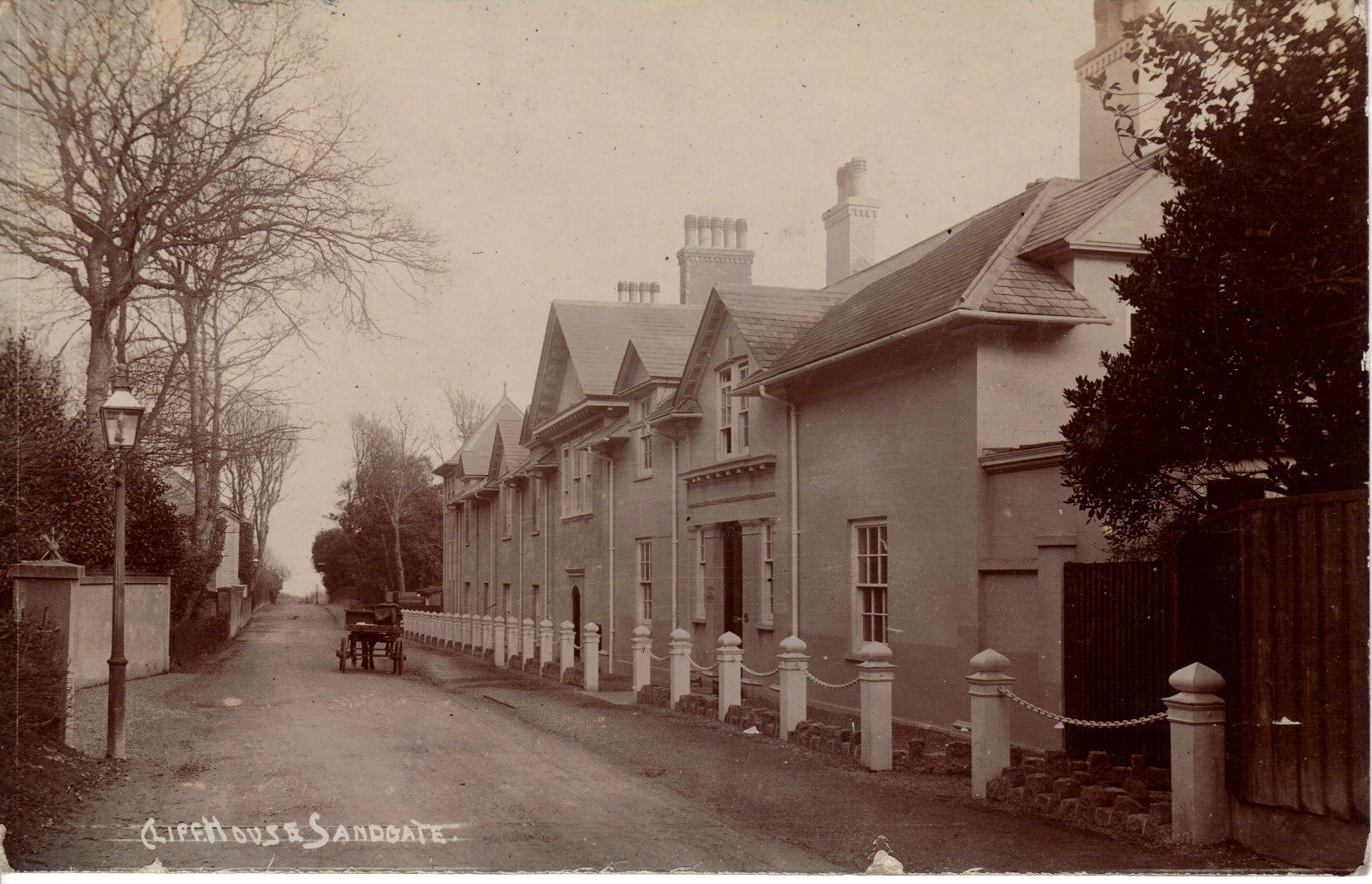
I was recently checking out the website 'Britain From Above' and was surprised and delighted to see a photo of a large house in 1920 I had never seen before, sitting at the base of the cliff, and had what looked like some beautiful formal gardens alongside.
The owners of these photographs have kindly allowed me to add this particular one to this page, and the house in question is marked with a blue arrow. I have enlarged it as much as the image will allow on the right.
I wrote to Alan Taylor and asked if he knew who this wonderful looking house had belonged to, and if he knew anything about it. He of course did not let me down, and sent me the photograph further down, which shows the house from the Lower Sandgate Road side.
It was called Cliff House, and belonged to Lord Radnor. Alan mentioned that he was living there in 1912, and lived there until he moved to Manor House, near the Grand Hotel. The photo on the right of Alan's pic shows the luxury flats that are now on the site of Cliff House. The two shots immediately below are from a modern aerial map showing the location of the flats .
There are several other Folkestone photographs on the Britain from Above website, and I urge you to check them out.

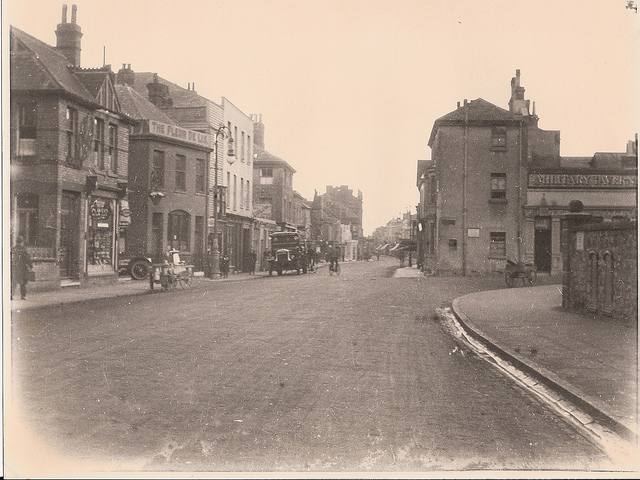
I received the wonderful photo on the left from Diane Hagan, who tells me that the Fleur de Lis pub, shown on the left at 23 Sandgate High Street was run by her Aunt & Uncle, Dora & Tom Shakespeare from around 1952 to the middle to late 60's. Of course this photo was taken much earlier, possibly early 1920's. Right opposite in the old photo, you can see the Military Tavern on the corner of Military Road. This whole building has been demolished, and in the front is a nice green space with benches, and at the back you can buy what is probably the best fish & chips in the area.
Here are some of Diane's memories of the Fleur de Lis: I have some great memories of the pub, we were living in Cheriton and every sunday morning my dad would take me there to see his sister and I always got a bottle of pop and packet of crisps, also occasionally a small glass of her home made wine, I was only about 10 at the time and dad certainly wouldn't let me have it but when he was out of the room I used to wheedle my way round my aunt and she would give me a very small amount. I can remember In what was called the club room there was a set of bar skittles which I used to love playing with and at the back of the pub were a lot of run-down looking outbuildings - I was down there briefly last summer and walked round there, where the outbuildings were is now a car park and the old pub itself looks rather the worse for wear, not sure if anybody is living there, it's no longer a pub of course.

image courtesy Britain From Above
Image courtesy Alan F. Taylor
Image courtesy Diane Hagan
Canamur School was originally founded by the partnership of Fannie Sarah Jarvis, Dora Margaret Pennycuick and Lucy Magdalene Pennycuick. Fanny retired December 31st 1921, and the school was continued by the other two partners - possibly sisters? Therefore the advertisement on the left must date from after 1921.
Saga Building, on the site of the former Police Training College which was previously the Star & Garter Convalescent Home which was originally Enbrook House.
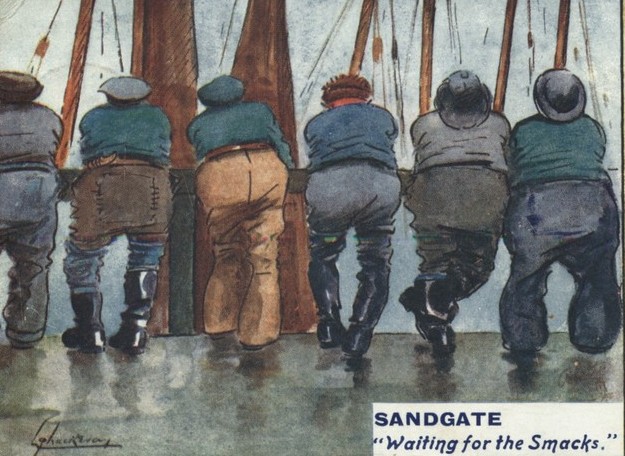
In the early 1800's, when Sandgate was becoming fashionable, the fourth Earl of Darnley bought a small holiday retreat here, Belle Vue. In 1852 this was replaced by Enbrook, a large country house.
Lord Darnley's granddaughter, the Countess of Chichester, wife of the fourth Earl of Chichester, inherited the property, which became known as Chichester House. She died in 1911 and in 1920 the property was sold as a 'Star and Garter' convalescent home for soldiers wounded in the 1914-1918 war.
It was later leased to the Home Office, first as a fire service training college and later as a police training centre, and is now the headquarters of Saga, the travel organisation. In the ground is an ice house used for preserving food in the days before refrigerators.
This is a modern photo of what used to be the Congregational Church, now a row of terraced houses in the High Street.
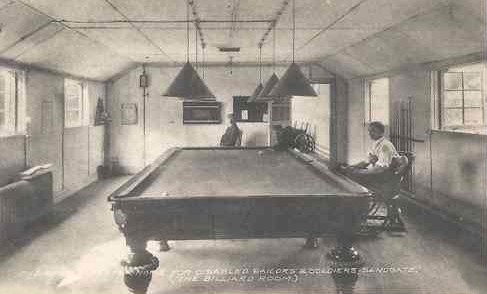
Billiard room in The Star & Garter
If any images remain blank after the page has loaded, right click into the space, and click 'show picture'


